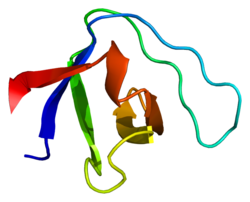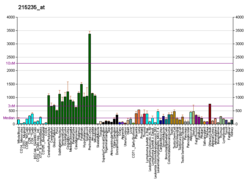1aey: ALPHA-SPECTRIN SRC HOMOLOGY 3 DOMAIN, SOLUTION NMR, 15 STRUCTURES
1aj3: SOLUTION STRUCTURE OF THE SPECTRIN REPEAT, NMR, 20 STRUCTURES
1bk2: A-SPECTRIN SH3 DOMAIN D48G MUTANT
1cun: CRYSTAL STRUCTURE OF REPEATS 16 AND 17 OF CHICKEN BRAIN ALPHA SPECTRIN
1e6g: A-SPECTRIN SH3 DOMAIN A11V, V23L, M25I, V53I, V58L MUTANT
1e6h: A-SPECTRIN SH3 DOMAIN A11V, M25I, V44I, V58L MUTANTS
1e7o: A-SPECTRIN SH3 DOMAIN A11V, V23L, M25V, V44I, V58L MUTATIONS
1h8k: A-SPECTRIN SH3 DOMAIN A11V, V23L, M25V, V53I, V58L MUTANT
1hd3: A-SPECTRIN SH3 DOMAIN F52Y MUTANT
1m8m: SOLID-STATE MAS NMR STRUCTURE OF THE A-SPECTRIN SH3 DOMAIN
1pwt: THERMODYNAMIC ANALYSIS OF ALPHA-SPECTRIN SH3 AND TWO OF ITS CIRCULAR PERMUTANTS WITH DIFFERENT LOOP LENGTHS: DISCERNING THE REASONS FOR RAPID FOLDING IN PROTEINS
1qkw: ALPHA-SPECTRIN SRC HOMOLOGY 3 DOMAIN, N47G MUTANT IN THE DISTAL LOOP.
1qkx: ALPHA-SPECTRIN SRC HOMOLOGY 3 DOMAIN, N47A MUTANT IN THE DISTAL LOOP.
1shg: CRYSTAL STRUCTURE OF A SRC-HOMOLOGY 3 (SH3) DOMAIN
1u06: crystal structure of chicken alpha-spectrin SH3 domain
1u4q: Crystal Structure of Repeats 15, 16 and 17 of Chicken Brain Alpha Spectrin
1u5p: Crystal Structure of Repeats 15 and 16 of Chicken Brain Alpha Spectrin
1uue: A-SPECTRIN SH3 DOMAIN (V44T, D48G MUTANT)
2cdt: ALPHA-SPECTRIN SH3 DOMAIN A56S MUTANT
2f2v: alpha-spectrin SH3 domain A56G mutant
2f2w: alpha-spectrin SH3 domain R21A mutant
2f2x: alpha-spectrin SH3 domain R21G mutant
2fot: Crystal structure of the complex between calmodulin and alphaII-spectrin
2jm8: R21A Spc-SH3 free
2jm9: R21A Spc-SH3 bound
2jma: R21A Spc-SH3:P41 complex
2nuz: crystal structure of alpha spectrin SH3 domain measured at room temperature

































